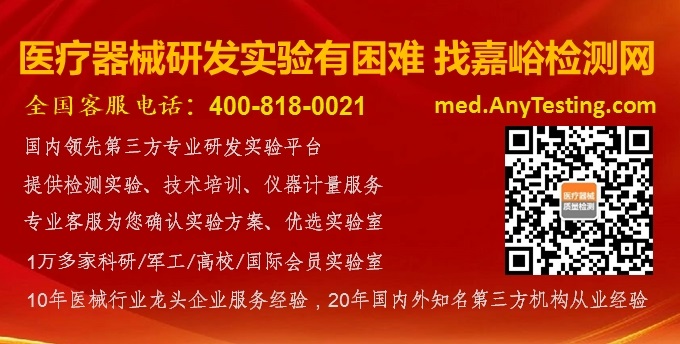MHRA曾发表对汽化过氧化氢(VHP)熏蒸消毒的局限性的文章,该文章表示,尽管在理想条件下,VHP可以使生物指示孢子减少多达6个对数,但是鉴于许多部件结构难以实现VHP穿透,或者由于非常小的阻塞会导致的VHP失败,甚至来自指纹的脂肪酸可以“保护”微生物免受VHP,VHP熏蒸过程是非常脆弱的,不能用于直接和间接接触产品部件的“灭菌”。“VHP在良好控制和验证的情况下,对于周围工作空间的消毒净化是非常有效的。但是,我们目前的立场是VHP不能用于对重要物品进行灭菌。”
原文翻译如下:
I have been the chairperson for the revision of Annex 1 of the EU and PIC/S GMPS for the manufacture of sterile medicinal products for a couple of years now. As such I engaged with stakeholders and other regulators to understand their wishes and concerns. One particular topic that has come up as a discussion point at a number of the more recent conferences that gives me great concern, and this is around how to sterilise direct and indirect product contact items in an isolator. I therefore felt it was time to go into print regarding the agency’s view.
我负责主持修订EU和PIC/S GMP附录1《无菌药品生产》多年。因此,我与利益相关方和其他机构商洽以理解他们的期望和关注点。在最近的一些会议上讨论了一个特别的话题,这个话题引起了我的极大关注,这涉及到如何对隔离器中直接和间接接触产品的物品进行消毒。因此,我觉得是时候将官方的观点公诸于众了。
A number of manufacturers are looking at isolator technology in new or existing facilities, which is great to hear, but the fly in the ointment, is that the consideration of how to sterilise direct and indirect contact parts does not always form part of the design process. But before I go further I will clarify what I mean by indirect and direct product contact parts:
许多厂商正在新设备或现有设备中考虑隔离技术,这听起来很棒,但美中不足的是,设计过程中并没有考虑如何对直接和间接接触产品的部件进行灭菌。在我进一步讨论之前,我会澄清我的意思是间接和直接接触产品的部件:
Indirect product contact parts, as the name implies, are equipment parts that come into contact with items and components, such as stoppers. So, although the equipment itself does not contact the product the items that are “processed” by the equipment do.
间接接触产品的部件,顾名思义,为接触物品和组件(如胶塞)的设备部件。因此,尽管设备本身并不接触产品,但该设备加工了产品部件。
Direct contact parts are those that the product passes through, such as filling needles or pumps.
直接接触产品的部件为产品经过,如分装针头或泵。
The issue that is arising is that a number of manufacturers are not including robust systems of sterilisation, such as autoclaves, dry heat or offsite irradiation in their facility designs. This leaves a situation where the Agency is being asked, why Vapour Hydrogen Peroxide (VHP) cannot be used for “sterilisation” of these direct and indirect product contact parts. After all, pharmacopeias refer to VHP as a sterilising agent. However, our concern is that although under ideal conditions, VHP can achieve a reduction of biological Indicator spores of up to 6 logs, the process itself is incredibly fragile.
问题是多数厂家在其设施设计中不包括强壮的无菌体系,如灭菌柜、干热或场外辐照。这就产生了药监机构被问及的问题:为什么过氧化氢(VHP)不能用于这些直接和间接接触产品部件的“灭菌”?毕竟,药典将VHP作为灭菌剂。然而,我们担心的是,尽管在理想条件下,VHP可以使生物指示孢子减少多达6个对数,但该过程本身是非常脆弱的。
If we cast our minds back a number of years, when VHP was being used to decontaminate the internal surfaces of isolators (not the indirect or direct contact parts) there were a number of issues seen with biological indicators failing the process due to clumping of spores at a microscopic level. This led to a number of papers being written (such as “Biological indicators don’t lie, but in sporicidal gassing disinfection cycles do they sometimes confuse the truth?”, European Journal of Parenteral & Pharmaceutical Sciences 2009; 14(1): 5-10 © 2009 Pharmaceutical and Healthcare Sciences Society) that justified biological indicator failure at one or two locations based on statistical analysis. The papers also recommended that a number of indicators (usually 3) be placed at each location to demonstrate a 3 log reduction (which is not a sterilisation process). This, along with other evidence, such as VHP failure due to very minor occlusion, even to the degree that fatty acids from a fingerprint may “protect” contaminating organisms from the VHP demonstrate the true fragility of the process as a sterilant.
如果我们回想几年,当VHP被用于净化隔离器内表面(而不是间接或直接接触部件)时,出现了许多生物学指标因孢子结块而失败的问题在微观层面。这导致了许多论文的撰写(例如“生物指标不说谎,但在杀菌消毒循环中它们有时会混淆事实真相?”,European Journal of Parenteral&Pharmaceutical Sciences 2009; 14(1):5 -10©2009 Pharmaceutical and Healthcare Sciences Society),根据统计分析,在一个或两个地点证明生物指标失效。文件还建议在每个地点放置若干指标(通常为3个)以显示3个对数减少量。这与其他证据一样,例如由于非常小的阻塞导致的VHP失败,甚至到来自指纹的脂肪酸可以“保护”微生物免受VHP,证明了该过程作为灭菌剂的真正脆弱性。
If we then consider the design of some of the indirect and direct product contact parts, we find that a number of them are either difficult to achieve VHP penetration, or, damage and wear and tear can leave surfaces that lead to difficulty to clean and therefore potential occlusion.
如果我们考虑一些间接和直接的产品接触部件的设计,我们发现其中一些难以实现VHP穿透,或者破损和磨损和撕裂留下难以清洁并可能阻塞VHP的表面。
VHP, when well controlled and validated, is a useful method for the decontamination of the surrounding workspace, e.g. an isolator environment. However, given the above concerns, our current stance is that VHP cannot be used to sterilise critical items. Even if some of the concerns can be removed by well thought out processes, this still leaves the sterilisation at risk of the vagaries of manual process during set up. For instance, how many of us see ‘human error’ as a high percentage of root cause errors during deviation investigations? Therefore, it would be a high risk option and potentially leave the patient at risk from such a fragile process.
VHP在良好控制和验证的情况下,对于周围工作空间的消毒净化,例如隔离环境,是一种有用的方法。但是,鉴于上述担忧,我们目前的立场是VHP不能用于对重要物品进行灭菌。即使一些问题可以通过经过深思熟虑的流程来解决,但这仍然会导致灭菌工艺设计人为调节不受控。例如,在偏差调查期间,我们有多少人将“人为错误”看作是高比例的根本原因错误?因此,这将是一个高风险的选择,并有可能使患者面临这样一个脆弱工艺的风险。
So, what are we expecting?
那么,什么是我们的期望?
Our expectation is that the contact parts (direct and indirect) are sterilised using a robust sterilisation method that meets the current requirements of annex 1. This means that:
我们的期望是,接触部件(直接和间接)使用符合附录1当前要求的高效的灭菌方法进行灭菌。这意味着:
the sterilising agent reaches all of the critical surfaces in a consistent and repeatable manner, typically requiring processes such as moist or dry heat sterilisation.
灭菌剂接触所有关键表面,并以一种一致的和可重复的方式,通常要求湿热或干热灭菌。
the item is unloaded from the sterilisation process either wrapped in integral covering or container, or is transferred under grade A conditions, such as a transfer isolator into the manufacturing isolator.
物品从灭菌程序中取出,应使用完整包裹或密闭容器,或在A级条件下转运,如转运隔离器进入生产隔离器。
We also expect that the parts are not exposed to the isolator environment until the isolator has been closed and after completion of the work zone decontamination VHP cycle.
我们还期望,在隔离器关闭并完成工作区VHP净化消毒程序之前,部件不会暴露在隔离环境中。
相关缺陷:
欧盟eudraGMDP曾发布关于台湾展旺生命科技股份有限公司的GMP不符合报告,其中包括VHP装载模式设计和应用不当的缺陷,摘译如下:
The manufacturer : SAVIOR LIFETEC CORPORATION
生产商:台湾展旺生命科技股份有限公司
Site address : 29, KE-JHONG ROAD, CHUNAN CHEN, MIAOLI COUNTY, TW-350, Taiwan
台湾苗栗县竹南镇科中路29号
Nature of non-compliance : The inspection identified a critical deficiency relating to the aseptic processing of Meropenem and Meropenem/Sodium Carbonate blend. The deficiency related to a lack of technical knowledge regarding sterile processing and included elements such as, autoclave and dry heat sterilisation of equipment, inadequate VHP load pattern design and application, media fills and environmental monitoring.
不符合情况:检查发现一个与美罗培南和美罗培南/碳酸钠混合物无菌加工相关的严重缺陷。缺陷与缺乏无菌处理技术知识有关,包括设备的高压灭菌和干热灭菌,VHP装载模式设计和应用不当,培养基模拟灌装和环境监测等因素。




